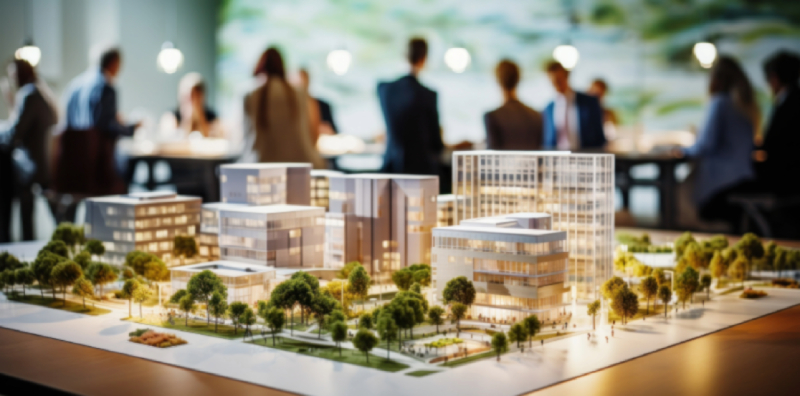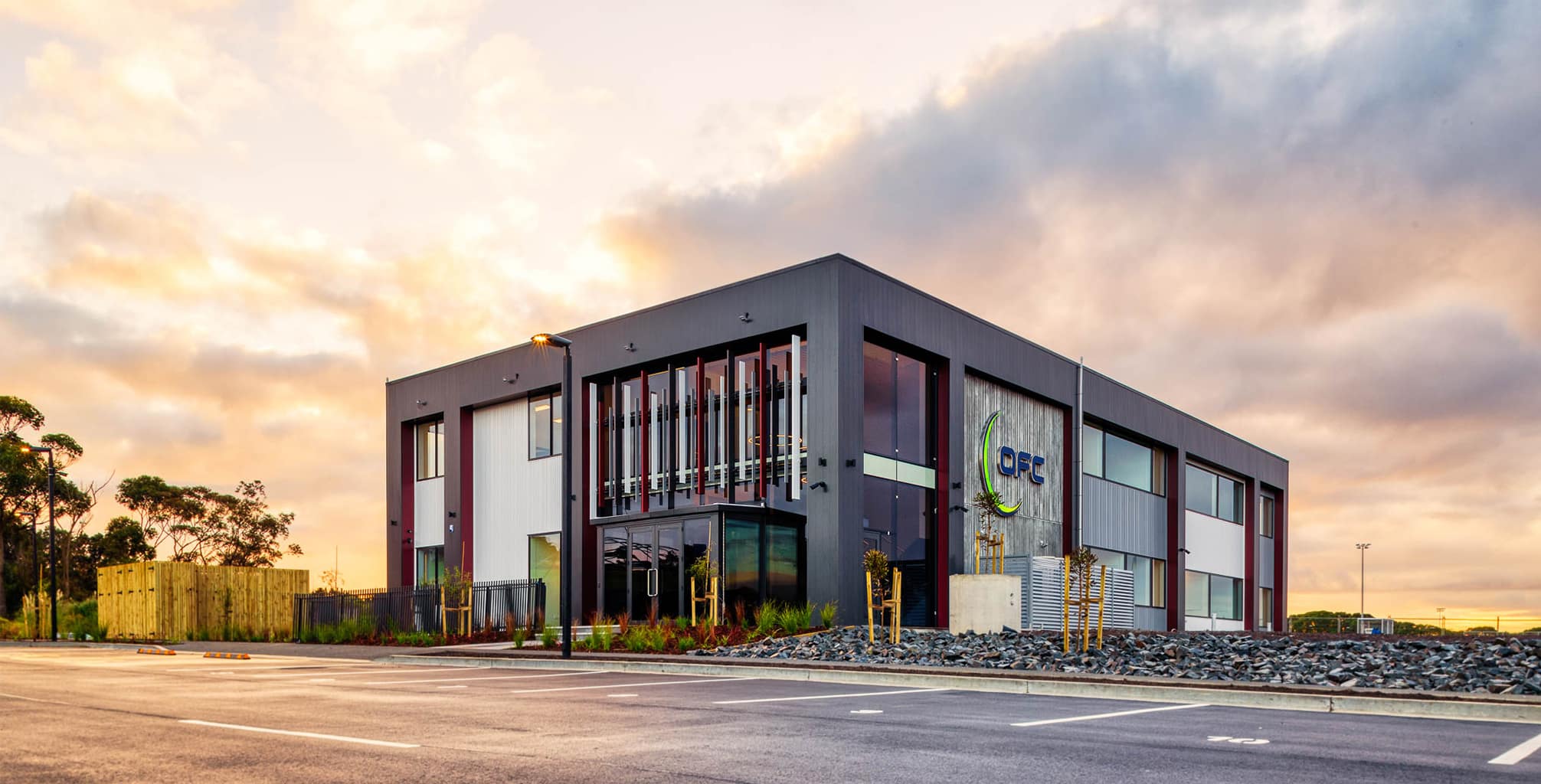Revealing the Comprehensive Services Given by Commercial Architects for Modern Advancement
Commercial Architects offer a vital function in modern development jobs. They blend style appearances with capability while adhering to governing needs. Their experience prolongs past plain construction, integrating lasting methods and ingenious modern technologies. As they browse complex zoning laws, Architects work together with various stakeholders to bring visions to life. This complex strategy questions concerning the developing duty of Architects fit modern-day rooms and the influence of their work with future growths.
Recognizing the Duty of Commercial Architects in Modern Dope
In modern metropolitan landscapes, Commercial Architects play an important role fit useful and visual spaces that meet diverse service needs. Their proficiency expands past simple style; they navigate complicated zoning regulations, developing codes, and environmental regulations. By collaborating with customers, they determine particular requirements, guaranteeing that each job aligns with the customer's vision while likewise thinking about functional aspects such as sustainability and cost-effectiveness. Commercial Architects are experienced at integrating innovative technologies and products right into their styles, improving both the functionality and energy efficiency of structures. They conduct thorough website analyses to analyze the potential challenges and opportunities presented by a place. Furthermore, reliable communication with contractors and other stakeholders is necessary, making sure that the job progresses smoothly from perception to completion. Ultimately, Commercial Architects contribute in developing spaces that not only meet practical functions but likewise add to the total character and vibrancy of metropolitan settings.
Concept Design: Changing Concepts Into Fact
Concept layout functions as an important stage in Commercial style, where ingenious layout services emerge from innovative thinking. This procedure depends on collaborative ideation, bringing together diverse point of views to fine-tune and improve preliminary principles. As ideas form, they transform from abstract concepts into tangible architectural realities.
Innovative Layout Solutions
Changing concepts into reality is the trademark of cutting-edge layout remedies in Commercial architecture. These options blend creative thinking with functionality, attending to the one-of-a-kind demands of modern-day growths. By leveraging advanced technologies and sustainable practices, Architects craft spaces that are not just aesthetically attractive yet additionally reliable and adaptable. Focus on individual experience drives the layout process, guaranteeing that environments foster productivity and partnership. Each project gain from a customized strategy, where principles are meticulously created to mirror the customer's vision while thinking about future patterns. Ingenious design services also focus on flexibility, enabling adjustments with time as service needs advance. Inevitably, these methods enhance the overall worth of Commercial areas, making them pivotal in today's affordable landscape.

Joint Ideation Process
Cooperation offers as the foundation of the ideation process in Commercial style, promoting creative thinking and innovation among varied stakeholders. Architects, customers, engineers, and neighborhood members take part in dynamic discussions, guaranteeing that all perspectives are considered. This comprehensive strategy enables the expedition of numerous layout principles, motivating unique remedies that align with the task's vision. Via workshops and conceptualizing sessions, concepts develop and refine, transforming preliminary concepts right into tangible layouts. Modern technology additionally plays a pivotal duty, with tools such as Structure Details Modeling (BIM) assisting in real-time cooperation and modifications. Ultimately, this joint ideation procedure not only enhances the style end result however also cultivates a feeling of possession and financial investment among all events entailed, bring about successful Commercial developments.
Zoning Evaluation: Navigating Regulations and Conformity
As designers commence on brand-new projects, recognizing zoning guidelines is important to ensuring compliance and avoiding pricey hold-ups. Zoning evaluation plays an important function in this process, as it involves examining neighborhood zoning regulations that dictate land use, building elevation, thickness, and setbacks. Commercial Architects possess the know-how to browse these intricate policies, helping customers recognize allowable uses and any type of essential variations.
Sustainable Layout Practices: Building for the Future
Lasting layout practices are significantly vital in the domain of Commercial style, particularly as environmental issues continue to rise. Architects focus on green products, energy-efficient systems, and layout techniques that decrease waste and environmental influence. Integrating renewable resource resources, such as solar panels and wind generators, enables buildings to produce their very own power and lower dependence on fossil site fuels.Furthermore, lasting layout highlights the significance of interior environmental high quality. This consists of using all-natural light, improving air flow, and picking safe products to enhance resident health and productivity. Eco-friendly roofing systems and living wall surfaces are likewise popular features that add to biodiversity and city cooling.Additionally, Commercial Architects typically incorporate water conservation techniques, like rain harvesting and drought-resistant landscaping. Through these cutting-edge approaches, they create areas that not just satisfy modern needs but additionally cultivate a sustainable future, resolving the expanding need for liable growth in the modern world.
Project Monitoring: Ensuring Timely and Reliable Execution
Effective project administration is essential for ensuring that Commercial design tasks are finished promptly and within budget. This role encompasses a variety of duties, including the coordination of various stakeholders, timelines, and sources. Commercial Architects utilize their competence to produce comprehensive project strategies that detail vital landmarks and deliverables, permitting organized development tracking.Regular interaction among team participants and customers is essential, promoting openness and helping with punctual decision-making. Threat administration strategies are also used to recognize prospective challenges early, enabling proactive services to be established. By using sophisticated project management tools, Architects can monitor project performance in real-time, making changes as necessary to maintain effectiveness.
Interior Decoration: Developing Functional and Aesthetic Areas
Interior decoration plays an important function in enhancing both performance and appearance within Commercial areas. Efficient area preparation can optimize process and improve customer experience, while visual design concepts add to an aesthetically appealing atmosphere - commercial architects. With each other, these aspects produce rooms that are not only functional but also motivating
Space Planning Effectiveness
While optimizing the energy of offered room, Commercial Architects prioritize room preparation performance to create both functional and cosmetically pleasing settings. This approach involves careful evaluation of the spatial design to assure ideal use of every square foot. Architects think about variables such as process, availability, and natural light to enhance functionality. By purposefully placing furnishings, tools, and workstations, they facilitate activity and interaction amongst users, promoting productivity. In addition, zoning different locations for details features aids in managing sound and privacy, producing a harmonious ambience. Via effective room planning, Commercial Architects can transform constraints into opportunities, guaranteeing that each space meets the diverse demands of its owners while adhering to governing requirements and industry criteria.
Aesthetic Design Concepts
Aesthetic design principles play a necessary function fit settings that are not only useful however also visually attractive. These principles direct i was reading this Commercial Architects in producing rooms that reverberate with users while boosting brand name identity. Crucial element include balance, proportion, and consistency, which interact to produce a natural appearance. Color systems and materials are meticulously chosen to evoke desired feelings and support the overall motif. Additionally, lights plays a critical role, influencing mood and visibility while highlighting building functions. By incorporating these principles, Architects guarantee that spaces are not only useful yet also welcoming and motivating. Ultimately, effective aesthetic layout cultivates a positive individual experience, encouraging engagement and contentment in Commercial environments.
Cooperation With Stakeholders: Cultivating Effective Partnerships
Effective partnerships in Commercial design depend upon reliable partnership with stakeholders, making certain that every voice is heard and valued. This joint method entails interesting numerous events, including customers, professionals, and community members, throughout the design and growth process. By fostering open interaction, Commercial Architects can deal with problems, collect insights, and straighten the job's vision with stakeholder expectations.The integration of diverse point of views improves creative thinking and innovation, resulting in more functional and cosmetically pleasing designs. Regular conferences, comments sessions, and workshops facilitate this dialogue, permitting Architects to adapt their strategies in feedback to stakeholder input. In enhancement, establishing count on via openness and liability strengthens these collaborations, leading to a smoother project execution.Ultimately, the success of modern anchor developments depends on the Architects' capacity to browse and integrate varying rate of interests, creating a collaborative setting that advertises common objectives and mutual success.
Regularly Asked Concerns
Just How Do Commercial Architects Manage Budget Constraints During a Task?

What Kinds of Software Application Do Commercial Architects Frequently Use?
Commercial Architects generally make use of software such as AutoCAD for preparing, Revit for Building Information Modeling, SketchUp for 3D modeling, and project management devices like Microsoft Job to improve collaboration and simplify operations throughout the design process.
Can Commercial Architects Assist With Obtaining Funding for Projects?
Commercial Architects can assist in obtaining financing for tasks by preparing in-depth proposals, helping to articulate style visions, and supplying monetary projections that can boost the likelihood of securing necessary financing from investors or banks.
Just How Do Architects Make Sure Safety Throughout the Building Refine?
Architects guarantee safety throughout building and construction by implementing strenuous design standards, collaborating with engineers, carrying out routine website evaluations, sticking to local guidelines, and fostering communication among all stakeholders to mitigate risks and advertise a protected functioning setting.
What Recurring Support Do Architects Supply After Project Completion?
After task completion, Architects offer recurring support with maintenance assessments, efficiency evaluations, and layout adjustments. They guarantee buildings fulfill advancing needs, address prospective problems, and preserve conformity with laws, cultivating a long-term partnership with customers.